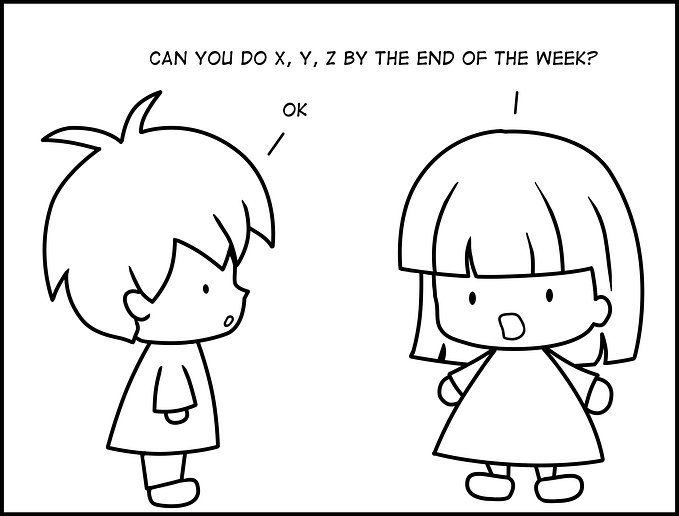The art of ‘timing’ a feedback — 10/50/90 Feedback Framework
“Seagull Manager” — a term that became popular through a joke in Ken Blanchard’s 1985 book Leadership and the One Minute Manager: “Seagull managers fly in, make a lot of noise, dump on everyone, then fly out.”
“Care personally; don’t put people in boxes and leave them there.”
— Kim Scott, former manager at Google & author of Radical Candor

Unfortunately, we’ve all met this person atleast once in our careers. Like these annoying beach birds, they swoop down and dump you with thoughtless comments at a time when you least needed/expected them.
“Yeahhh, but this was not I wanted…”
“Can you make this one ‘small’ change? Just change the approach and start from scratch…”
Awww…grrr….frustrated? Hate yourself, your project and all the managers in this Universe? Wondering, what on earth does this person know about your project?
Here’s a pretty simple, yet cool feedback framework — The 10/50/90 Framework designed to help both you and your manager.
What does 10–50–90 mean?
Can you make a wild guess?
Well, 10–50–90 refers to the completion phase of a project/task/activity.
Gotcha? Let’s learn what each phase means and the do’s and don’ts in those stages.
At the 10% Phase:
“Make feedback normal. Not a performance review.”– Ed Batista
When?
It is in the beginning stages of any initiative.
What feedback can be given?
- Validations of goal / vision / approach
- Have we thought about the different audiences to target?
- Suggestions for scope and providing better customer value
- “Go” or “no go” decisions on project elements like tech stack, tools etc.
- Quick check on the alignment of organizational goals vs product goals
Why?
The project is still in its infancy and it is easy and less costly to steer the ship in the right direction at this phase.
At the 50% Phase:
“Great feedback changes our behaviour in a way that later on we’re grateful for, and that we believe made our lives better.” — Julie Zhuo, VP of Product Design at Facebook
When?
We are in the middle of the ocean. Yeah — We’re more or less half way done!
What feedback can be given?
- Was the feedback from the 10% phase implemented correctly?
- Validations of the current work-in-progress product against the goal / vision / approach
- Ensure the user experience, flow, architecture is relevant and that there aren’t any gaps
- Feedback about right functionality, performance, stability
- Plug-in stakeholder feedback
Why?
Generally the overall concept is set, the product has evolved. Yet there is still time to incorporate changes. It’s a critical phase because if you don’t give your feedback now, you’re running the risk of falling prey to the dreaded “seagulling” behaviour.
At the 90% Phase:
“Life is not about things going perfectly the first time — it’s about how we adapt to what we receive” — Joy Mayer, TEDxCoMo
When?
It’s time to wrap up. It’s just the “Is there anything else I missed?” round of feedback.
What feedback can be given?
- Was the feedback from the 50% phase implemented correctly?
- It is all about the tiny details — spacing, spelling errors, positioning tweaks, pixel perfection etc.
Pro-Tip: Best thing is to avoid giving feedback and trust the team/TM to be the expert!
Why?
It still leaves a 10% cushion time to correct critical blockers. As a manager, you wield a lot of power. When you give feedback, your team might take it as law. At this stage, they would be pretty exhausted and would start making all the changes people are telling them, which would be detrimental for the product.
Looks good! Will it work for me?
Not just “Feedback” — basically for anything to work, the irreplaceable factor is “Trust”.
At the 10% and 50% phases, the team would find it difficult to showcase the unfinished product unless the bridge of trust is built between the manager and the team.
The other hard part of this framework is to match the right feedback to the right phase. It would need practice and maturity to hold off from providing feedback at the inappropriate phase.
What if you miss a feedback phase? Be genuine enough and admit your mistake and call it out in the subsequent phase. Try your best not to repeat the same one more time.
“Feedback turns good into better and better into best.”
― Frank Sonnenberg, Listen to Your Conscience: That’s Why You Have One
You are the person who can heavily influence your team member’s morale and productivity more than anyone else. Use clear expectations, consistent communication and clear feedback at the right time to beat your Seagull management style!








